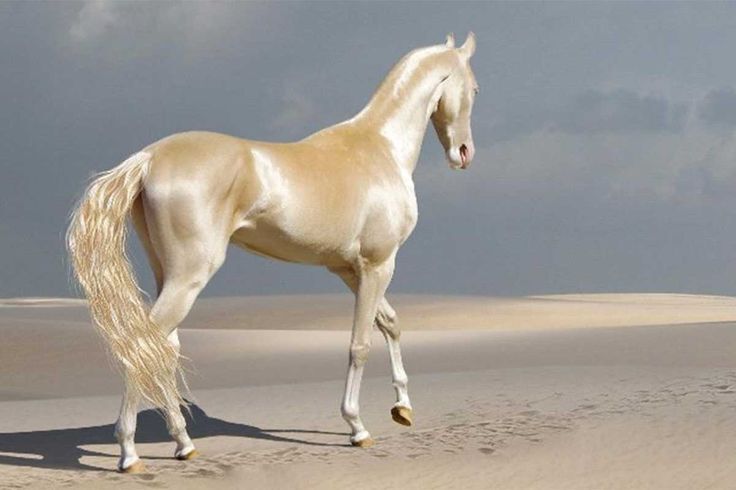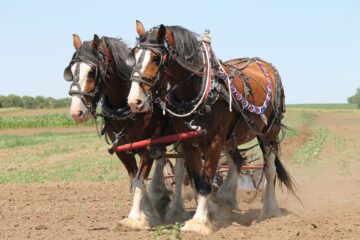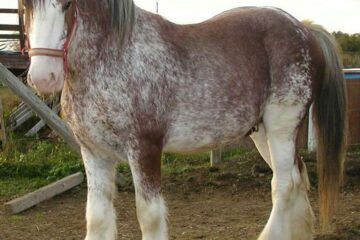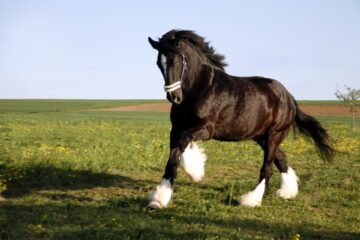
Introduction
Imagine a realm where horses are not just noble creatures, but living, breathing works of art. In the heart of Central Asia, amid the ancient sands of Turkmenistan, exists a breed of horse that seems plucked from the dreams of artists and poets – the Akhal-Teke. These magnificent beings are not mere horses; they are equine alchemists, each adorned with a coat that captures the very essence of sunlight itself. Welcome to the world of the Akhal-Teke horses and their five mesmerizing metallic coats, where each steed is a masterpiece, a living embodiment of grace, strength, and a peculiar gleam that has enthralled humanity for millennia.
Akhal-Teke Horses History and Origin
Travel back in time to the windswept deserts of Turkmenistan, where history and legend intertwine to give birth to a horse breed like no other—the Akhal-Teke. With a lineage as ancient as the sands that cradle their hooves, these horses are not just witnesses to history; they are its living embodiment. Join us on a journey through time and across the vast steppes of Central Asia as we unravel the captivating story of the Akhal-Teke horses, their enigmatic origins, and the enduring legacy that continues to shine brightly in the equestrian world today.
Why to choose Akhal-Teke Horses
Unparalleled Elegance: Choosing an Akhal-Teke horse is like selecting a living piece of art. Their striking metallic coats, which shimmer like molten gold or liquid silver in the sunlight, make them the embodiment of grace and beauty. These horses aren’t just animals; they are living sculptures that can turn heads and inspire awe wherever they go. When you choose an Akhal-Teke, you choose a horse that will not only be your riding companion but also a true conversation starter and a source of endless admiration.
A Living Legacy: Akhal-Teke horses carry with them the weight of centuries of history and tradition. Originating in the ancient lands of Turkmenistan, they were revered by warriors, cherished by nomads, and admired by emperors. Choosing an Akhal-Teke is like adopting a piece of living history. You become a custodian of a lineage that has withstood the test of time, a lineage that has traversed deserts, conquered challenges, and graced the pages of legends. Your Akhal-Teke is not just a horse; it’s a living link to a storied past.
Unwavering Loyalty and Versatility: Beyond their stunning appearance and rich history, Akhal-Tekes offers a partnership like no other. Their intelligence, loyalty, and adaptability are legendary. Whether you’re a seasoned equestrian or a beginner, these horses are quick learners and patient instructors. They bond deeply with their riders, forging a connection that transcends the saddle. Akhal-Tekes are equally at home in the show ring, on the trail, or in competitive sports. Their endurance and stamina are unparalleled, ensuring they can handle long rides and challenging terrains with poise and strength. When you choose an Akhal-Teke, you gain a horse and a lifelong companion who will stand by your side through every equestrian adventure.
Average life of Akhal-Teke Horses
The Akhal-Teke, often hailed as the “Turkmenistan Treasures,” are celebrated not only for their captivating metallic coats and remarkable athletic abilities but also for their impressive lifespan. On average, an Akhal-Teke horse can gracefully journey through two decades, with many exceeding this mark and gracefully entering their 30s or, in some extraordinary cases, even their early 40s. This remarkable longevity underscores the breed’s innate resilience and vigor.
Several factors converge to bestow this remarkable longevity upon Akhal-Teke horses. Their origins in the unforgiving desert landscapes of Central Asia have instilled in them a natural robustness that enables them to thrive in challenging environments. Furthermore, the meticulous breeding practices that prioritize health and impeccable physical attributes contribute to their extended lifespans. Maintaining a balanced diet, regular exercise, and vigilant veterinary care all add to their enduring vitality. Thus, choosing an Akhal-Teke as a companion often means embarking on a lifelong journey with a faithful and enduring friend, as their bonds can stand the test of time and enrich your life for many years to come.
Best diet and nutrition for Akhal-Teke Horses
The Akhal-Teke horse, with its legendary elegance and endurance, deserves a diet that matches its exceptional nature. To ensure these magnificent creatures thrive, their nutrition should revolve around two foundational principles: balance and quality. Begin with high-quality forage, such as grass hay or alfalfa, to provide essential fiber and nutrients. The type and quantity of forage may vary depending on factors like age, activity level, and climate, so it’s wise to collaborate with an equine nutritionist or veterinarian for personalized guidance.
Supplement your Akhal-Teke’s forage with grains, if necessary, but exercise caution. While grains like oats or barley can provide additional energy for active horses, they should be fed sparingly and adjusted to the horse’s specific needs. Overfeeding grains can lead to digestive complications and weight issues. Additionally, consider protein requirements for muscle development, and if needed, introduce legumes like alfalfa. Ensure a balanced mineral and vitamin intake, and always provide access to clean, fresh water. Above all, maintain a regular feeding schedule and monitor your horse’s body condition, making adjustments as needed. By tailoring the diet to the individual needs of your Akhal-Teke and emphasizing their well-being, you’ll be supporting these regal horses in achieving their full potential and maintaining their health and vitality.
Best Breeding Month for Akhal-Teke Horses
The optimal breeding month for Akhal-Teke horses largely depends on various factors, including geographic location, climate, and the intended use of the foal. However, many breeders prefer the late spring to early summer months, typically from April to June, as the prime time for Akhal-Teke breeding. During this period, the weather is generally more predictable, with milder temperatures and longer daylight hours, which can be conducive to successful breeding and foal development.
This timeframe aligns with the natural breeding season for horses, as it corresponds to the increasing daylight that triggers mares to come into estrus, or heat. It also allows for foals to be born during the following spring when forage is more abundant, providing a favorable environment for their growth and development. However, it’s important to adapt the breeding schedule to specific regional climates, as extreme temperatures or environmental conditions can influence the choice of the breeding month. Breeders should also consider the mare’s reproductive cycle, health, and readiness when determining the best time for Akhal-Teke breeding to increase the chances of producing healthy and vigorous foals.
Some Common Diseases in Akhal-Teke Horses
Akhal-Teke horses, like all horse breeds, are susceptible to a range of common equine diseases. Understanding these potential health issues is essential for responsible horse ownership. One common ailment that can affect Akhal-Tekes is colic, a term encompassing various digestive disorders. These can result from factors like abrupt changes in diet, insufficient water intake, or the consumption of sand while grazing. Colic can range from mild discomfort to life-threatening, so prompt veterinary attention is crucial. Proper management practices, such as maintaining a consistent feeding schedule, providing clean water, and ensuring a suitable diet, can help reduce the risk of colic.
Another health concern for Akhal-Teke horses is equine influenza, a highly contagious respiratory disease. This viral infection can spread rapidly in barns or at equestrian events, affecting the horse’s overall well-being and performance. Vaccination is a key preventive measure against equine influenza, and it’s important to adhere to recommended vaccination schedules to protect your Akhal-Teke and prevent outbreaks. Regular monitoring of your horse’s respiratory health and isolation of sick individuals can also help mitigate the risk of disease transmission within a herd. By staying informed about these and other common equine diseases and working closely with a veterinarian, Akhal-Teke owners can ensure the health and longevity of their cherished horses.

Uses of Akhal-Teke Horses
Akhal-Teke horses, celebrated for their stunning beauty and exceptional qualities, have a versatile range of uses that extend beyond their aesthetic appeal. These remarkable horses excel in various equestrian disciplines, from competitive sports such as dressage, show jumping, and endurance riding to recreational riding and even therapeutic equine-assisted activities. Their natural athleticism, endurance, and willingness to cooperate make them sought-after partners in the equestrian world. Additionally, Akhal-Tekes’ gentle and intelligent nature makes them excellent companions for riders of all levels, whether in the demanding arenas of competitive sport or the serene trails of leisurely riding. Furthermore, their enduring spirit and remarkable longevity ensure they remain cherished companions for years, forging bonds that transcend the saddle. In essence, the Akhal-Teke is not just a horse; it’s a versatile and cherished ally in the pursuit of equestrian excellence, recreation, and therapeutic connections.
Some tips to keep Akhal-Teke Horses
- Adequate Nutrition: Provide a well-balanced diet with high-quality forage as the foundation. Adjust the diet based on the horse’s age, activity level, and specific nutritional needs.
- Regular Exercise: Akhal-Teke horses thrive on regular exercise and mental stimulation. Incorporate a consistent training regimen to keep them physically fit and mentally engaged.
- Proper Shelter: Ensure they have access to suitable shelter, especially in extreme weather conditions, to protect them from the elements.
- Hydration: Ensure access to clean, fresh water at all times to prevent dehydration, particularly during hot weather or strenuous activities.
- Regular Veterinary Care: Schedule routine check-ups with a veterinarian, including dental care, vaccinations, and deworming, to maintain their overall health.
- Social Interaction: Akhal-Tekes are social animals; provide them with companionship through the company of other horses or regular human interaction.
- Grooming: Regular grooming not only keeps their coat and skin healthy but also fosters a strong bond between you and your horse.
- Proper Hoof Care: Regular hoof care, including trimming and shoeing if necessary, is essential for their overall well-being and soundness.
- Safe Environment: Ensure a safe and secure environment to prevent accidents or injuries in their living area or turnout.
- Monitor Health: Keep a keen eye on their health, behavior, and body condition; any changes could indicate underlying health issues requiring prompt attention.
FAQs
Why are Akhal-Teke horses so shiny?
Akhal-Teke horses are exceptionally shiny due to a combination of unique genetic factors and the fine structure of their hair. These horses have a naturally occurring trait that makes their hair shafts exceptionally thin and flat compared to other horse breeds. The flatness of the hair shafts allows for a higher level of light reflection, creating the characteristic metallic sheen. Additionally, Akhal-Tekes possess fewer hair follicles per square inch and less insulating fat beneath the skin, which further enhances the reflective properties of their coat. This unique combination of genetics and physical characteristics results in the breathtaking and distinctive shine that is often described as “golden” or “shimmering” and sets the Akhal-Teke breed apart as one of the world’s most visually striking horses.
How many Akhal-Teke horses are left in the world?
In the contemporary horse world, the Akhal-Teke breed is represented by approximately 6,600 individuals worldwide. While the heartland of this remarkable breed remains in Turkmenistan and Russia, you can also find these elegant horses in various corners of Asia, Europe, North America, Uruguay, and even Australia. The global presence of Akhal-Tekes speaks to their enduring appeal and the dedicated efforts of breed enthusiasts to ensure their continued existence and influence in the equine world.
Conclusion
In conclusion, the Akhal-Teke horse, with its mesmerizing metallic sheen and unique genetic makeup, stands as a testament to the artistry of nature. These remarkable horses, with their thin and flat hair shafts, reflect light like no other breed, creating a luminous and breathtaking appearance. While their numbers have faced challenges in the past, dedicated breeders and enthusiasts worldwide have worked diligently to conserve and promote the Akhal-Teke, resulting in approximately 6,600 individuals scattered across various continents. These horses are not only a symbol of beauty and grace but also exemplify versatility, excelling in various equestrian disciplines and therapeutic roles. The Akhal-Teke continues to captivate hearts, bridging the gap between history and modernity, tradition and performance, and remains a cherished breed with a shining future.



0 Comments